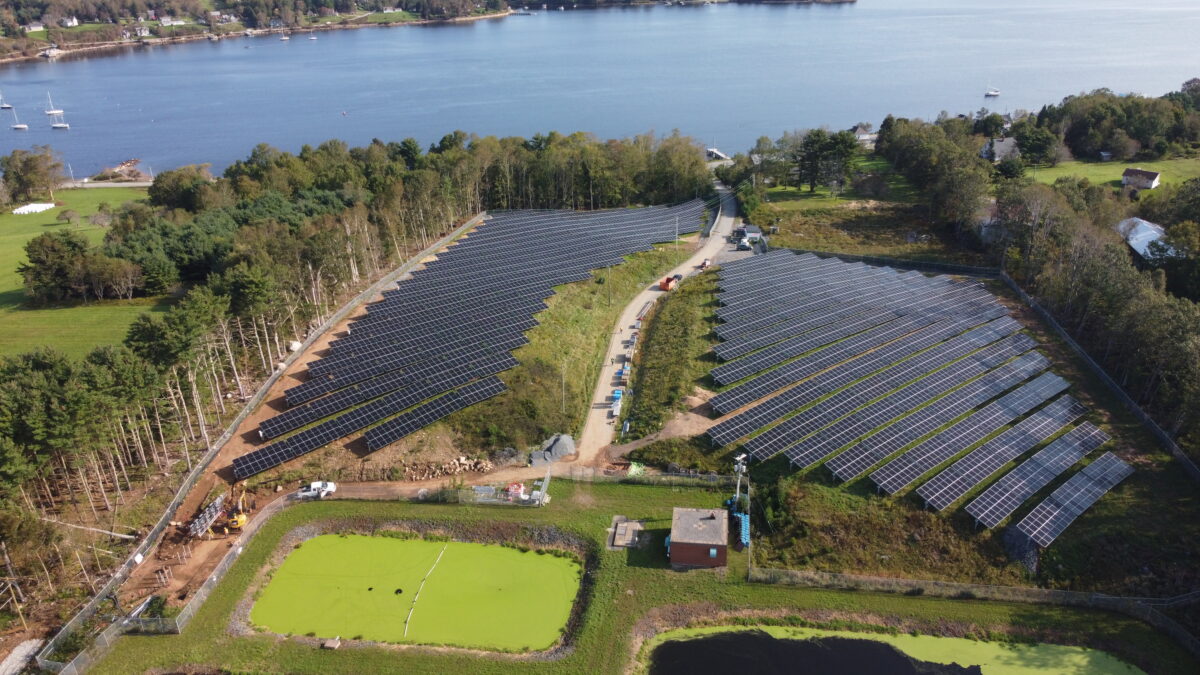Nova Scotia has the strongest greenhouse gas reductions target in all of Canada, aiming for 53% below 2005 levels by 2030, 80% renewables by 2030 and net-zero by 2050. With the completion of its largest utility-scale solar facility to date, Nova Scotia moves a step further toward these goals.
The 1.9 MW Mahone Bay is one of the largest operating solar plant in Nova Scotia, with the 2.4 MW Berwick plant also making a significant contribution to cutting greenhouse gases. Both are community solar projects, with the clean energy available to local residents.
The projects are named for and owned by the towns in which they are located, with Mahone Bay being on the south shore of the province and Berwick not far from the north shore. The two projects were developed by AREA, a municipally owned clean energy project developer, along with Goldbeck Solar, an EPC company that specializes in the construction of large-scale solar. In 2022 the Goldbeck Solar Group acquired the North American PV-EPC business unit of GP Joule and is now the sole shareholder of the two North American companies: GP Joule PV Canada Corp. and GP Joule PV USA Inc.
The projects include LG solar modules, SMA Sunny Highpower Peak 3 inverters, and Goldbeck’s own Solar Phlegon fixed tracking system. Goldbeck reports that the Phlegon is designed for “arduous” terrain, as they feature up to 12% slope tolerance in the east-west direction and a 200 km/h wind resistance level.
AREA is owned by the towns of Berwick, Mahone Bay and Antigonish (where a third solar plant is currently under construction). Goldbeck Solar specializes in the construction of commercial rooftop and ground-mounted solar, and has 200 MW installed in Canada and the United States, with a goal to double that in 2024.
“The completion of Mahone Bay and Berwick aligns with our dedication to advancing sustainable energy solutions,” said Aaron Long, general manager from AREA.
The combined energy production of the two plants is enough to power approximately 803 homes annually. The Berwick Solar Garden is estimated to eliminate approximately 3859 metric tons of carbon dioxide annually, equivalent to removing 893 gas-powered cars from the roads.
“These projects, along with the Antigonish solar garden that is still under construction, represent our commitment to the Nova Scotia Renewable Electricity Standard of 80% by 2030,” adds Laurie Boucher, chair of AREA. “AREA, and the municipal electric utilities that it supports, are entirely aligned with the Federal and Provincial ambitions to accelerate the decarbonization of Nova Scotia at least possible cost to ratepayers while simultaneously delivering rural economic development.”
This article was amended to change the stated 4.8 MW size of Mahone Bay facility to 1.9 MW, making it not the largest, but one of the largest in Nova Scotia.
This content is protected by copyright and may not be reused. If you want to cooperate with us and would like to reuse some of our content, please contact: editors@pv-magazine.com.









By submitting this form you agree to pv magazine using your data for the purposes of publishing your comment.
Your personal data will only be disclosed or otherwise transmitted to third parties for the purposes of spam filtering or if this is necessary for technical maintenance of the website. Any other transfer to third parties will not take place unless this is justified on the basis of applicable data protection regulations or if pv magazine is legally obliged to do so.
You may revoke this consent at any time with effect for the future, in which case your personal data will be deleted immediately. Otherwise, your data will be deleted if pv magazine has processed your request or the purpose of data storage is fulfilled.
Further information on data privacy can be found in our Data Protection Policy.